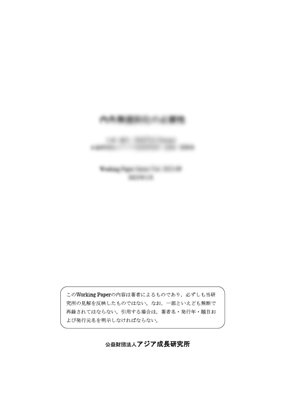International Trade in Steel Products: Evidence on “Dumping” Versus Competitive Behavior

| 執筆者 | William E. James, Craig Parsons |
|---|---|
| 発行年月 | 2003年 7月 |
| No. | 2003-13 |
| ダウンロード | 315KB |
内容紹介
In the wake of the East Asian financial crisis of 1997-98, demand for steel fell sharply in East and Southeast Asia as economic activity declined. East Asian steel producers responded by increasing shipments to the U.S. where demand was strong with the robust economic growth. The U.S. steel industry, both owners and unions, reacted to the surge in imports with a flurry of antidumping petitions. The steel lobby also organized a political campaign demanding quantitative restrictions on steel imports into the U.S. The U.S. executive branch responded favorably to the antidumping petitions and quickly launched investigations leading to punitive antidumping duties on steel imports from many East Asian, developing and transitional economy steel producers. Steel imports quickly declined and the growth in import penetration in the U.S. market for steel was kept in check. Despite this, the new U.S. administration made good on campaign promises to steel states and initiated the use of safeguards under the GATT escape clause, thus escalating the trade conflict in steel. This chapter examines the economic issues of competitive firm behavior as an alternative explanation of “dumping” and considers the possibility of collusive behavior of steel firms under the antidumping actions. It considers the possible avenues East Asia may explore for resolving the trade dispute and the economic costs associated with U.S. steel protection.
